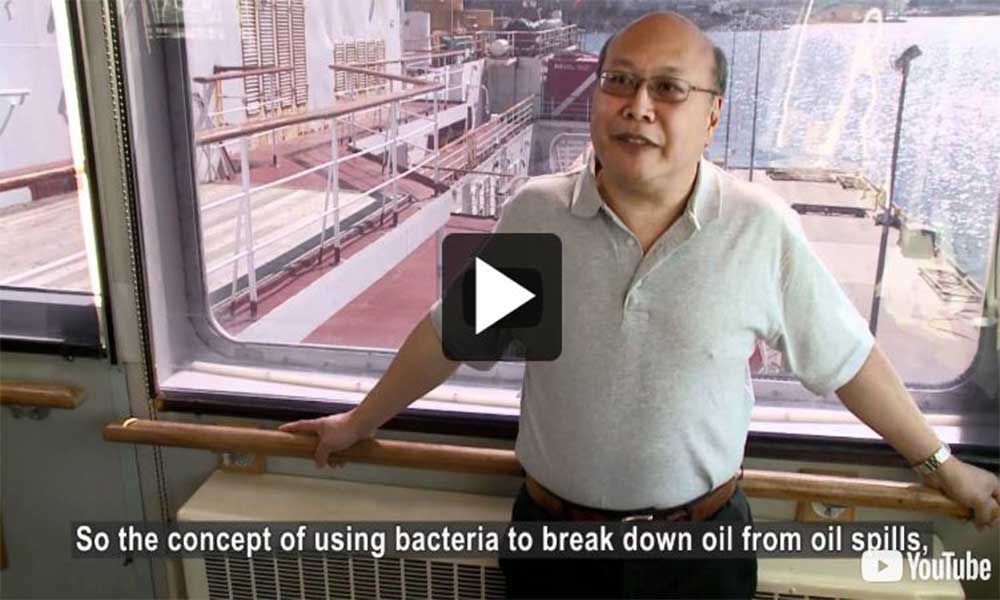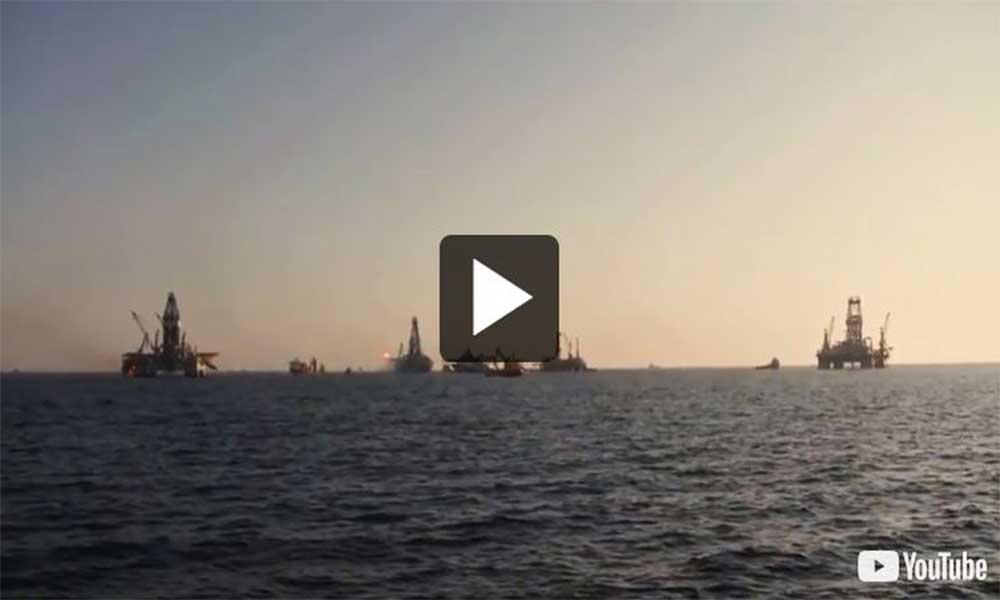Offshore oil, gas and energy research
Research areas
The COOGER team brings its expertise to a broad range of oil spill research. Located at the Bedford Institute of Oceanography, COOGER conducts studies including small scale lab-based experiments to larger mesocosm (examining the natural environment under controlled conditions) studies in their test tank facilities, as well as field work on- and offshore. Research labs are well equipped for chemical and biological analysis, focusing on national programs under which the work is mandated.
Reports and articles related to these research areas.
On this page
Methods used in research
COOGER uses a number of analyses throughout their work. Some common research activities include:
- Developing in-situ (in original conditions) monitoring and tracking techniques to model how oil might move in the environment
- Observing the weathering of oil to understand its persistence and breakdown in the environment
- Observing microbial interactions in response to oil
- Observing and monitoring outcomes from the application of oil spill countermeasures to simulated slicks under varying conditions
National programs
Oceans Protection Plan
Oceans Protection Plan
Launched in 2016, the Oceans Protection Plan aims to partner the Government of Canada with Indigenous and coastal communities, the marine industry and other stakeholders with the goal of developing a world leading marine safety system to keep Canada’s waters and coasts safe for all Canadians, present and future. The plan aims to accomplish a vast number of objectives which can be categorized under four overall goals:
- Developing a world-leading marine safety system: to ensure that spill response on Canadian waters is prompt and efficient.
- Preserving and restoring marine ecosystems: to preserve and restore marine ecosystems affected by increased anthropogenic (human impact on the environment) activity.
- Creating stronger Indigenous partnerships and engaging coastal communities: to build partnerships, ensure the communities’ participation in the marine safety system and on specific marine initiatives, and to provide new equipment and training to help communities play a bigger role in marine safety.
- Creating a stronger evidence base: improving response and decision-making for various types of spilled oil and petroleum products through research and providing conclusions and advice to oil spill responders.
Learn more about the Oceans Protection Plan and what these goals mean for Canada’s oceans and coasts.
World-Class Tanker Safety System
World-Class Tanker Safety System
In 2013, the recommendations from the Tanker Safety Expert Panel led to the development of the World-Class Tanker Safety System to address the increase in tanker traffic and potential for oil spills in Canadian waters by reviewing Canada’s marine oil spill preparedness and response regime. In their first report, the panel provided a number of recommendations based on five key assumptions:
- Spill planning and response resources used should be based on risks specific to geographical areas.
- The potential polluters themselves should be ready for the worse-case scenario through their Response Organization, having cascading resources and mutual assistance agreements.
- Quick and efficient response is the key factor in mitigating the effects of an oil spill.
- Response planning should be focussed on what is most effective in limiting the environmental and socio-economic impacts of a spill based on the geographical area.
- Canadian taxpayers should not have to pay for the response to spills in Canadian waters.
Learn more about the Tanker Safety Expert Panel or the World-Class Tanker Safety System.
Main areas of research
The fate and behaviour of refined oil products
Under the Oceans Protection Plan, COOGER is studying the fate and behaviour of refined oil products (diesel and other fuels, lubricating oils, etc.) which are transported by ocean tanker, rail car and pipeline in large volumes. COOGER is conducting research in order to understand how these products interact with the environment in the event of a spill. The outcomes of this research will be used to provide advice to responders to improve the decision making process and preparedness for spills.
The fate and behaviour of diluted bitumen products
Under the World-Class Tanker Safety System, COOGER is looking at the fate and behaviour of diluted bitumen products. Produced and transported in large quantities from the Alberta oil sands, bitumen is a semi-solid oil product that must be diluted to be transported easily. Being a mix of two products (which differs from blend to blend and season to season), diluted bitumen does not always behave in the water the way that conventional oils would.
Because of the many unknowns, COOGER is conducting research in order to understand how diluted bitumen products weather, interact with ecosystems and change according to the spill countermeasure used to clean a spill. The outcomes of this research will be used to provide advice to oil spill responders to improve the decision making process and preparedness for an oil spill.
Integrated response planning
Within the World-Class Tanker Safety System program, one of the recommendations from the Tanker Safety Expert Panel was that oil spill response plans be developed for specific regions. COOGER has supported the development of Integrated Response Plans for coastal ports with geographical, industrial and environmental differences by providing background information on factors that influence spill behaviour, as lessons learned from past spill events. Under an initial pilot study, 4 ports with the highest levels of tanker traffic in Canada were chosen for study:
- Saint John and Bay of Fundy, New Brunswick
- Port Hawkesbury-Canso Strait, Nova Scotia
- St. Lawrence Seaway, Montreal to Anticosti, Quebec
- Strait of Georgia and the Juan de Fuca Strait, British Columbia
Information drawn from these reports will help refine integrated response planning models and act as a template for spill-response planning in other areas nationally. Other distinct, high traffic ports are being looked at under the Oceans Protection Plan.
Collaborations
While COOGER’s own research focuses on the areas listed above, they have a broad skill set that allows for collaborations with other groups on various topics. A few examples of these are:
Simulating, tracking and modelling of oil spills, underwater blowouts and their plumes
Simulating, tracking and modelling of oil spills, underwater blowouts and their plumes
A collection of projects done with groups such as the New Jersey Institute of Technology (NJIT), the US Environmental Protection Agency (EPA), the National Energy Technology Laboratory (NETL), Clemson University, and Texas A&M.
- The Laser In-Situ Scattering Transmissometry (LISST) instrument is an important tool in studying oil droplet size in oil spills. The effects of concentration and particle size on LISST oil droplet size distributions were observed in a collaboration with NJIT and EPA. An approach to measure these effects was proposed and will be used to make corrections to data obtained by the instrument.
- This collaboration with NJIT and Texas A&M University resulted in a new version of the droplet formation scheme, VDROP-J (tested against laboratory and field data), which can be used to study the combined release of oil and gas from a subsea blowout. VDROP-J was used to model the droplet and bubble formation in the 2010 Deepwater Horizon blowout in the Gulf of Mexico.
- To test existing models, a large scale underwater oil release was conducted and measured in this collaboration with NJIT, NETL, Clemson University and EPA. One of the key findings from this study was the observation of new processes, key factors in quantifying droplet size distribution which determines if oil will reach the surface or stay at depth.
Observing, understanding, and predicting the fate and behaviour of oil products in freshwater environments
Observing, understanding, and predicting the fate and behaviour of oil products in freshwater environments
In collaboration with the International Institute for Sustainable Development-Experimental Lakes Area (IISD-ELA), the Boreal Project at the University of Ottawa, Queen’s University and Environment and Climate Change Canada.
- This study was conducted over the summer of 2018 to observe, understand and predict the fate and behaviour of diluted bitumen in freshwater environments, of importance due to the proximity of pipelines and railways to freshwater bodies across the country. Concern is also drawn from the Kalamazoo river spill, where diluted bitumen, mixed with heavy sediment loads, sunk in the freshwater river, making clean up difficult. Large mesocosm experiments were done in the Experimental Lakes Area of Northwestern Ontario where microbes, plankton, insects, fish and chemical properties were measured and collected. The large scale and location of this study allows for a proper observation and prediction of the fate and behaviour of diluted bitumen in freshwater environments.
Observing and understanding the role of phytoplankton in an oil spill
Observing and understanding the role of phytoplankton in an oil spill
In collaboration with the National Research Council.
- Phytoplankton are thought to have implications in the Deepwater Horizon spill of 2010. Because of this, researchers are seeking to understand the response of phytoplankton to oil in their environment. By understanding their role and their presence in the timeline of a spill, the accuracy of spill modelling can be improved. Other goals are to isolate strains of phytoplankton that either thrive or recede in the presence of oil, so they can be used as biosensors, or to isolate phytoplankton that release oil degrading compounds in the presence of oil, which can be used as biosurfactants or biosensors.

Retrieving the CTD/Rosette for water sampling during the Deepwater Horizon response. DFO staff participated in the response effort and provided advice on oil droplet size distributions used to track the subsurface plume of dispersed oil. Photo credit: COOGER

Research scientist Alice Ortmann collecting a sample from a bin filled with sand, oil and water for a recent beach mesocosm study. Photo credit: COOGER

Glass bottle containing oil covered beads. Photo credit: COOGER

The Fast Rescue Craft launched from the CCGS Hudson heads toward the Terra Nova FPSO to conduct water column sampling. This was part of a DFO science program looking at impacts of offshore produced water discharges. Photo credit: COOGER
Features
Centre for Offshore Oil, Gas and Energy Research

Dr. Ken Lee, former Director of COOGER, discussing oil dispersants used in the Gulf of Mexico.
COOGER Arctic

Top scientists propose to test oil spill clean-up technologies in the Arctic.
- Date modified: